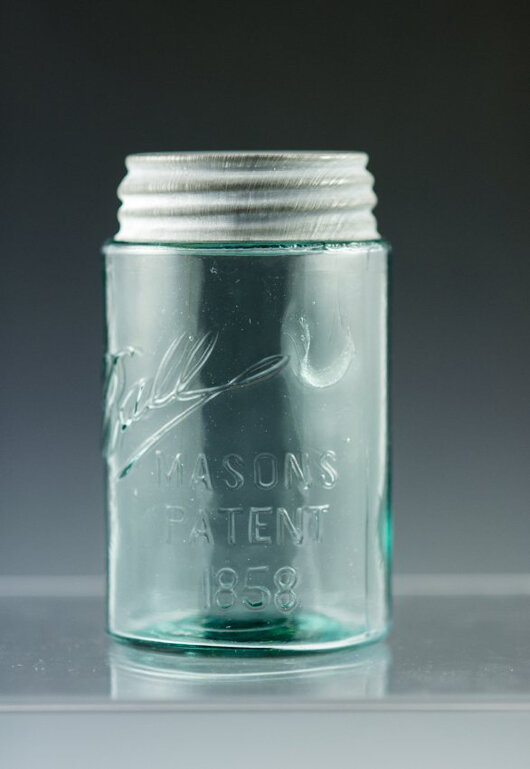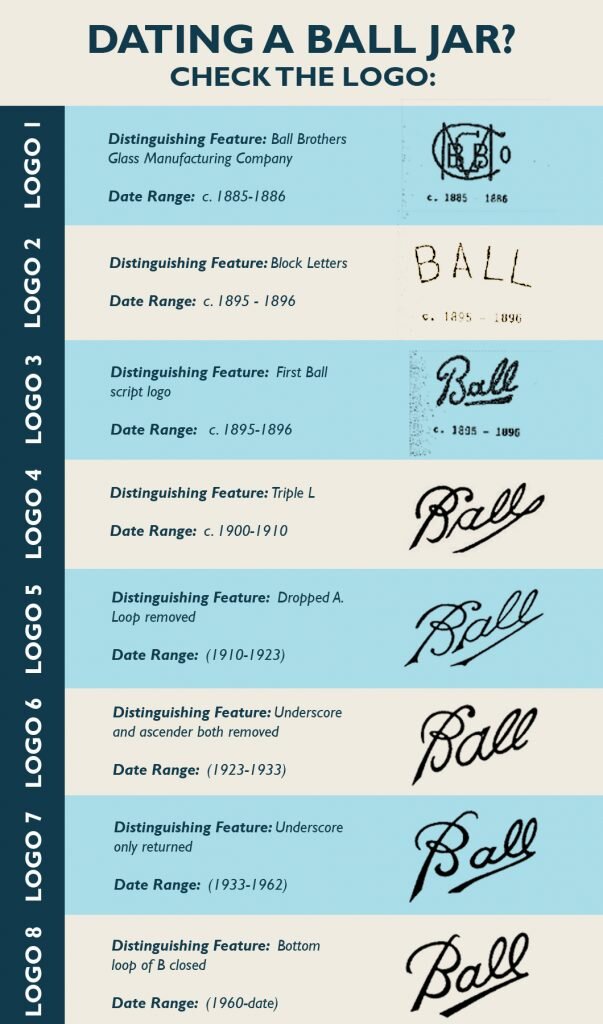How to Date a Ball Jar
No, not at a movie on Saturday night. Not that kind of date. Instead, I mean, how do you tell how old your Ball jar is? I’m the current (2013) contact for information about historical Ball jars on the Ball Corporation web site. One of the most common emails I receive comes with a description of a jar—e.g., blue pint Perfect Mason with the number 5 on the bottom—and the question, “How old is my jar?”
Use The Logo To Find An Approximate Age
It would have been much easier if Ball had placed a date on each and every jar, but that didn’t happen. Luckily, there are some tips and tricks you can use to determine an approximate age for your jar. First check the logo, which changed fairly frequently until about 1962. The earliest logo was the intertwined BBGMC—Ball Brothers Glass Manufacturing Company—used on jars made in Buffalo, New York.
Rejoice if you find one of those; Buffalo jars are pretty rare. They were first made in Buffalo in 1884 and for several years after. But, you say, how can the date 1884 be correct, since you have a jar embossed with a patent date of 1858. That was the date when John Mason received his patent for the threaded screw-type closure, and it appears on many different brands of jars. It doesn’t indicate when the jars were made.
Check the logos below against the logo on your jar. Date ranges are estimates.
Ignore the Mold Number
How about that big number on the bottom of many jars? Does that help date the jar? Again, the answer is unfortunately, no. These are called mold numbers. They identify the position that the mold in which the jar was made held on the glassmaking machine. Most machines would have from eight to ten molds, all making the same type of jar. The quality control people used the number on the bottom of the jar to identify which mold was producing bad jars. The number has nothing to do with when the jar was made.
Join the Club
If you’re interested in learning more, check out the entire Midwest Antique Fruit Jar and Bottle Club web site. You’ll find a plethora of jar information. If you’re interested and close by, attend one of the club’s meetings, which meets regularly at Minnetrista. The schedule is on the club’s web site. You’ll meet enthusiastic and knowledgeable jar collectors!

